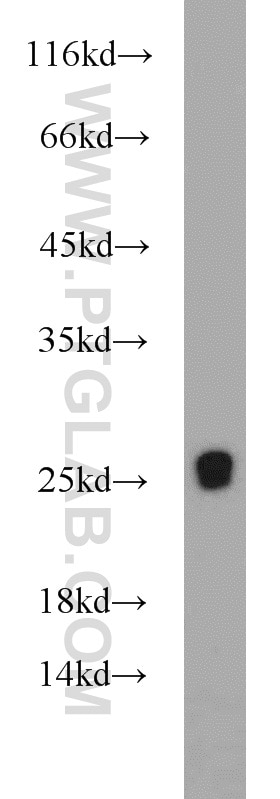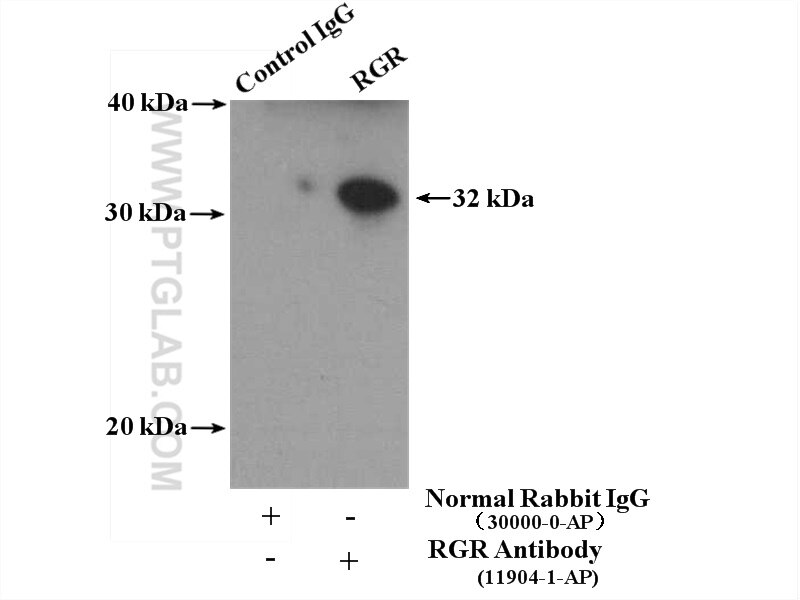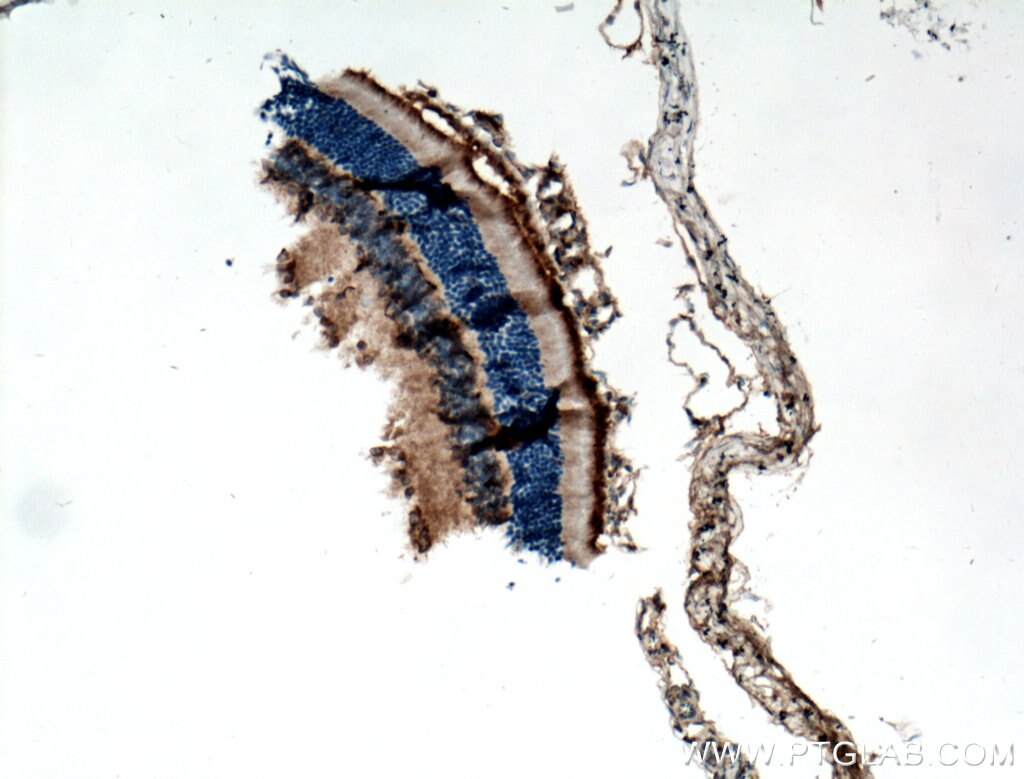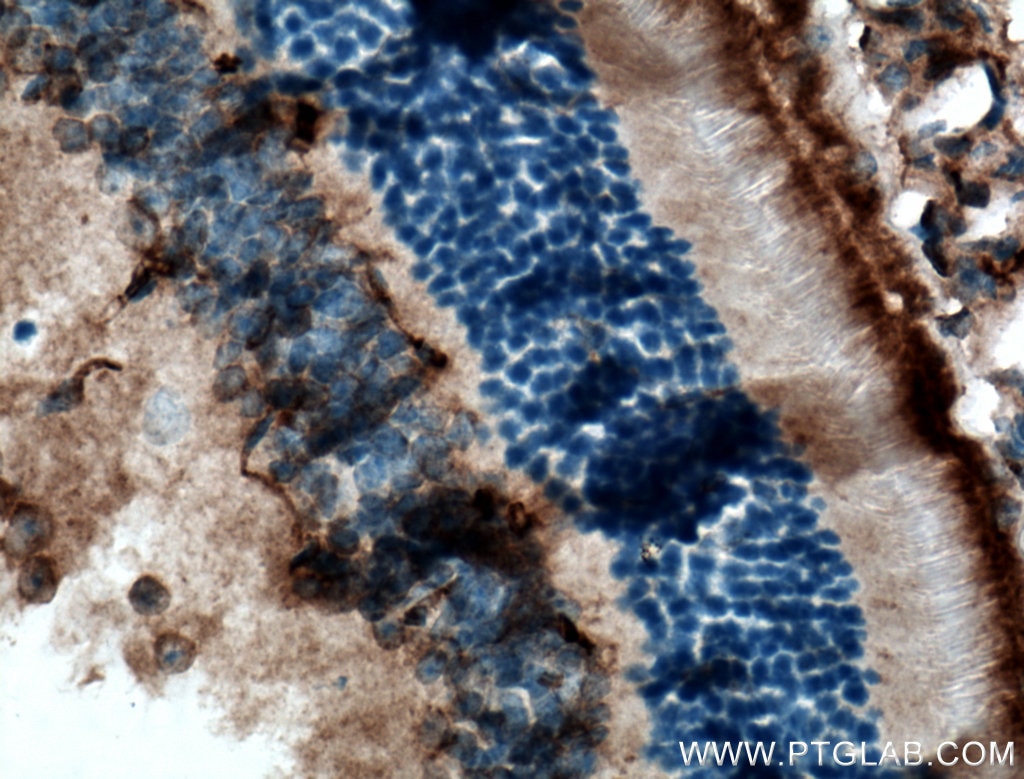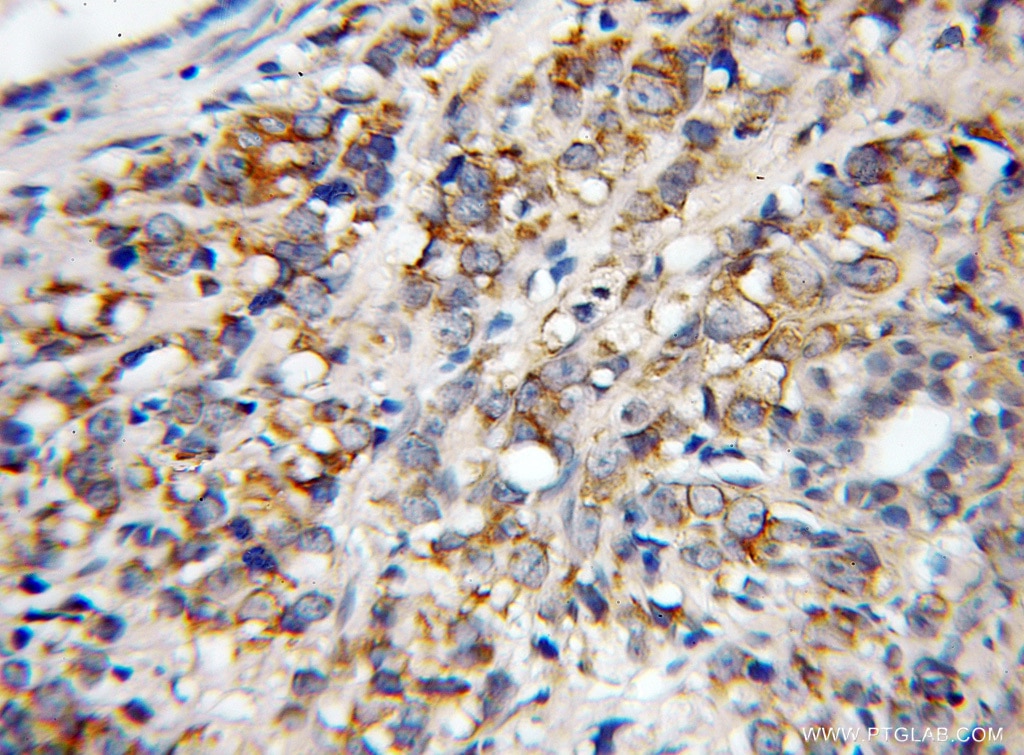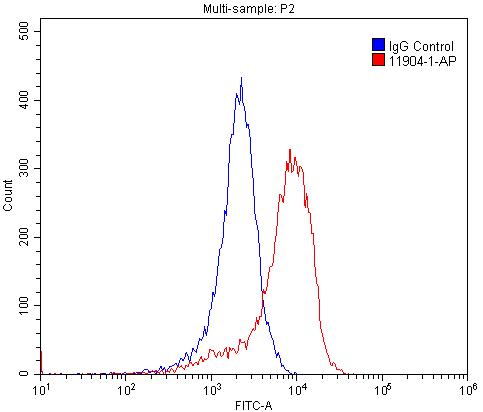RGR Polyclonal antibody
RGR Polyclonal Antibody for WB, IP, FC, IHC, ELISA
Host / Isotype
Rabbit / IgG
Reactivity
human, mouse, rat
Applications
WB, IP, FC, IHC, ELISA
Conjugate
Unconjugated
Cat no : 11904-1-AP
Synonyms
Validation Data Gallery
Tested Applications
| Positive WB detected in | human heart tissue |
| Positive IP detected in | PC-3 cells |
| Positive IHC detected in | mouse retina tissue, human prostate cancer tissue Note: suggested antigen retrieval with TE buffer pH 9.0; (*) Alternatively, antigen retrieval may be performed with citrate buffer pH 6.0 |
| Positive FC detected in | PC-3 cells |
Recommended dilution
| Application | Dilution |
|---|---|
| Western Blot (WB) | WB : 1:500-1:1000 |
| Immunoprecipitation (IP) | IP : 0.5-4.0 ug for 1.0-3.0 mg of total protein lysate |
| Immunohistochemistry (IHC) | IHC : 1:500-1:2000 |
| Flow Cytometry (FC) | FC : 0.20 ug per 10^6 cells in a 100 µl suspension |
| It is recommended that this reagent should be titrated in each testing system to obtain optimal results. | |
| Sample-dependent, Check data in validation data gallery. | |
Product Information
11904-1-AP targets RGR in WB, IP, FC, IHC, ELISA applications and shows reactivity with human, mouse, rat samples.
| Tested Reactivity | human, mouse, rat |
| Host / Isotype | Rabbit / IgG |
| Class | Polyclonal |
| Type | Antibody |
| Immunogen | RGR fusion protein Ag2552 |
| Full Name | retinal G protein coupled receptor |
| Calculated Molecular Weight | 32 kDa |
| Observed Molecular Weight | 32 kDa, 26 kDa |
| GenBank Accession Number | BC008094 |
| Gene Symbol | RGR |
| Gene ID (NCBI) | 5995 |
| RRID | AB_2179498 |
| Conjugate | Unconjugated |
| Form | Liquid |
| Purification Method | Antigen affinity purification |
| Storage Buffer | PBS with 0.02% sodium azide and 50% glycerol pH 7.3. |
| Storage Conditions | Store at -20°C. Stable for one year after shipment. Aliquoting is unnecessary for -20oC storage. 20ul sizes contain 0.1% BSA. |
Background Information
RGR is a G protein-coupled receptor preferentially expressed at high levels in the retinal pigment epithelium (RPE) and Mueller cells of the neural retina. Like other opsins which bind retinaldehyde, it contains a conserved lysine residue in the seventh transmembrane domain. RGR acts as a photoisomerase to catalyze the conversion of all-trans-retinal to 11-cis-retinal. The reverse isomerization occurs with rhodopsin in retinal photoreceptor cells. The gene of PGR may be associated with autosomal recessive and autosomal dominant retinitis pigmentosa (arRP and adRP, respectively). Alternative splicing results in multiple transcript variants encoding different isoforms.
Protocols
| Product Specific Protocols | |
|---|---|
| WB protocol for RGR antibody 11904-1-AP | Download protocol |
| IHC protocol for RGR antibody 11904-1-AP | Download protocol |
| IP protocol for RGR antibody 11904-1-AP | Download protocol |
| FC protocol for RGR antibody 11904-1-AP | Download protocol |
| Standard Protocols | |
|---|---|
| Click here to view our Standard Protocols |
